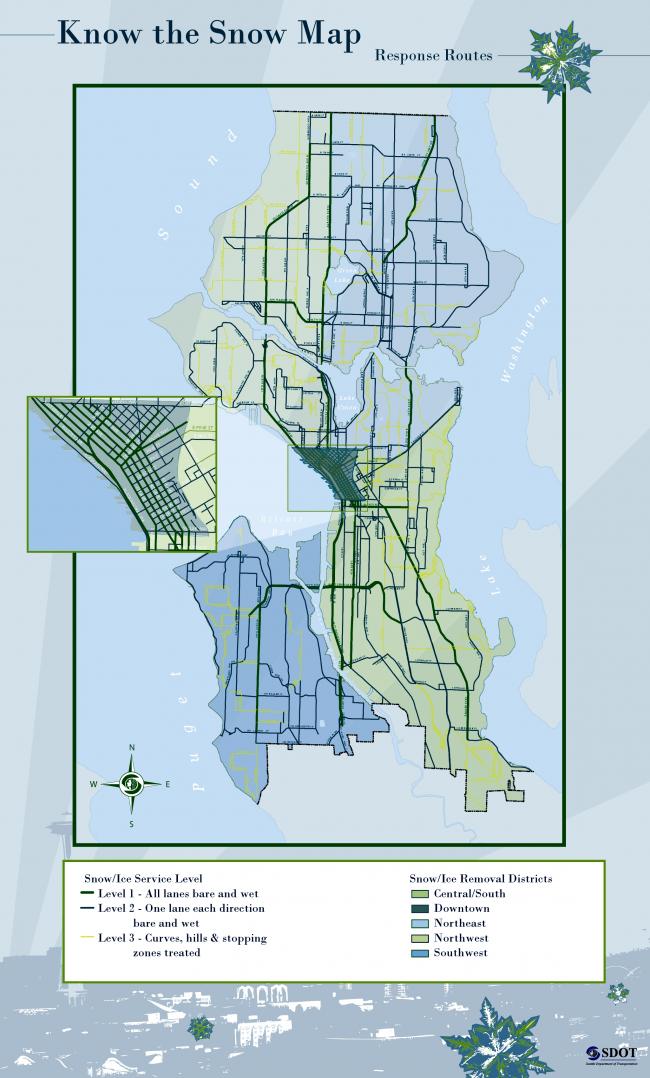City unveils new snow plan
This map details which streets the city plans to keep free of snow. Each street is ranked based on importance and rank influences the priority given to that street.
Thu, 10/22/2009
King County Metro and the Seattle Department of Transportation (SDOT) unveiled the city’s new winter weather plan, which includes using salt to clear the roads, during a recent public meeting.
Following last winter’s adverse weather, SDOT made significant changes to the way they approach these situations. Most notably, road maintenance crews should be dropping salt—a departure from the sand used during last year’s storm—out on city’s main arterials to keep surfaces wet and bare.
Under the new plan, if city workers see a 50 percent or greater chance of snow, they should be out covering the roads with liquid or granule salt 12 hours prior to the first snowflake falling over the Seattle skyline.
To implement the new strategy, SDOT does not plan to add new vehicles to its maintenance division.
“It's not a good investment for the taxpayer to double, triple, or quadruple the size of your street maintenance fleet because we don't need it for 360 of the 365 days a year,” said Charles Bookman, SDOT’s interim street maintenance director.
Rather, maintenance workers have “tuned up” and “tightened up” operations with an eye toward better communication through their deployment center so that the trucks available are more efficiently deployed, he said.
The new plan relies on buses using the cleared arterials to get people where they need to go during a snowstorm. King County Metro does not plan to use articulated buses, the city’s larger but less maneuverable buses.
Instead, smaller buses would run more often along the city’s main and secondary arterials, said Jack Lattemann, senior transportation planner for King County Metro.
Neighbors would have to pitch in to clean up their sidewalks and clear their streets if necessary; the city plans to avoid residential streets unless hills or other natural barriers impede residents from reaching bus routes.
The reasoning there is that the city will work to keep heavily trafficked roads open for the buses, which should keep effectively circulating throughout the city. Also, many city vehicles are too wide to safely drive down residential streets.
“We don't want to go down the street clipping people's mirrors off,” Bookman said.
To keep people moving, the city and county also plan to use Facebook, Twitter and perhaps even a dedicated winter weather blog to keep residents up to date about what the road conditions look like all along their commute.


